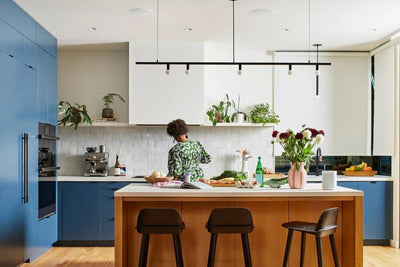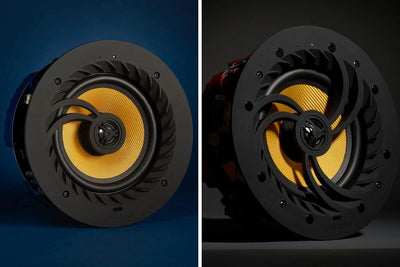When it comes to designing the perfect in wall setup for your home, the options can seem endless and sometimes a bit confusing.
One question that often comes up is whether ceiling speakers can be used in a wall?
If you’re pondering this very question then you’re in the right place.
Let’s dive into the details and see if those ceiling speakers can find a home on your walls.
Understanding Ceiling Speakers
First let’s clarify what ceiling speakers are and what they’re designed for.
Ceiling speakers are designed to be installed in the ceiling, providing a discreet audio solution that saves space and keeps your home looking sleek and tidy.
They typically feature a grille that sits flush with the ceiling, blending in seamlessly with your décor and they have a wide dispersion angle to accurately fill your room with sound.
Can You Install Ceiling Speakers in a Wall?
The short answer is yes, you can install ceiling speakers in a wall.
The more important question really is “Why do you want to put ceiling speakers in the wall?”
If you haven’t bought your speakers yet then definitely opt for proper in wall speakers. They may be a bit more expensive (not always) but they’re designed for the job and will provide a much better sound.
If you already have some spare in ceiling speakers and want to re-purpose them for in-wall, or perhaps you only have room for one in wall speaker (hint: no one makes a stereo in wall speaker) so maybe you’re considering using a single stereo ceiling speaker instead.
I personally had a single stereo ceiling speaker mounted at high level in a bathroom stud wall. I couldn’t get access to the ceiling. The positioning was less than ideal and it worked fine for background music, but it was far from optimal and didn’t sound as good as a speaker in the ceiling would have.
There are a few considerations to keep in mind to ensure you get the best sound quality and avoid any potential issues leading to disappointment when you turn your music or movies on.

Considerations for In Wall Installation
- Speaker Design & Directionality: Ceiling speakers are designed to project sound downward, making use of the ceiling’s reflective surfaces to distribute audio evenly throughout the room. When placed in a wall the directionality changes and you’ll need to consider how this impacts your listening experience. Look for speakers with adjustable tweeters that allow you to direct the sound towards the listening area.
- Mounting Depth: Wall cavities might differ in depth compared to ceiling cavities. Check the mounting depth of your ceiling speakers to ensure they’ll fit snugly within your wall without protruding or causing issues with insulation or wiring. Sometimes ceiling speakers will have a greater depth than in-wall equivalents.
- Sound Quality: Walls and ceilings have different acoustic properties. Ceilings often provide a more reflective surface, while walls might absorb sound differently. This can impact the audio quality and require some adjustments or additional acoustic treatments to get the best results.
- Installation Process: Installing speakers in a wall might be more complex than in a ceiling, depending on your wall’s construction. Be prepared for potential challenges like cutting through studs, dealing with insulation, or navigating around electrical wiring.
Potential Drawbacks
Whilst it is possible to use ceiling speakers in your wall, there are some potential drawbacks to consider:
- Sound Quality: As mentioned earlier, the different acoustic properties of walls and ceilings can impact sound quality. You may need to make adjustments to get the best audio experience.
- Installation Complexity: Installing speakers in a wall might be more complex and require additional tools and expertise.
- Limited Adjustability: While some ceiling speakers have adjustable tweeters, they may not offer the same level of flexibility as dedicated in-wall speakers.
- Round Grilles: Most ceiling speakers have a circular grille, this looks great on a ceiling but usually looks out of place when installed in a wall. You can get square grilles for most brands of ceiling speaker though so check if your speakers brand have them available.
Final Thoughts
In conclusion, while ceiling speakers are designed for ceilings, they can certainly be used in walls with some careful planning and consideration.
Will they work? Yes… but Is it optimal to do this? No.
The key is to ensure that the speakers fit well, are positioned correctly and that you’re aware of the potential impact on sound quality.
But if you’re buying your speakers from new then go for in-wall speakers rather than in-ceiling speakers!
If you already have some ceiling speakers and want to repurpose them for in-wall then in most cases for background music they’ll sound okay.
Remember, whether you choose ceiling, wall, or even a combination of both, the most important thing is that you’re happy with the sound and the look of your setup.
Happy listening! If you have any questions or need further advice, don’t hesitate to reach out. We’re here to help!





